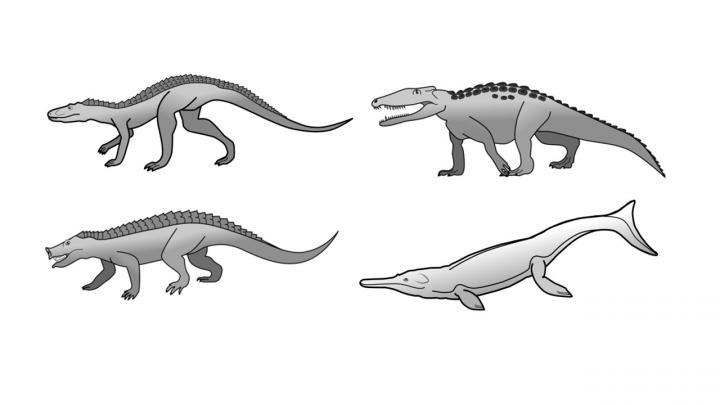If you look around, you’ll see all sorts of dinosaur descendants, although we call them birds nowadays. But if you want to truly see a dinosaur-like creature, just like it would have roamed the Jurassic age 200 million years ago, just find a crocodile. While some of the species have died out (previous ancestors also consisted of giants as big as the dinosaurs, plant-eaters, fast runners, and serpentine forms that lived in the sea), a lot of what you see now is what you got then.
In new research published in the journal Nature Communications Biology, scientists from University of Bristol explain how crocodiles follow a pattern of evolution known as ‘punctuated equilibrium’.

If it ain’t broke, don’t fix it
The rate of crocodile evolution is generally slow, but occasionally they evolve more quickly because the environment has changed and they need to adapt. Specifically, the research suggests that the crocs’ evolution speeds up when the climate is warmer (which it was in the age of the dinosaurs more than it is, today which could explain the different varieties that emerged then), and that their body size increases.
The secret to their slow aging is the limited diversity of crocs and their apparent lack of evolution. It seems the crocodiles arrived at a body plan that was very efficient and versatile enough that they didn’t need to change it in order to survive. They have the ability to thrive in or out of water — they can stay under water for up to an hour — and are able to live in complete darkness. They are also very robust, meaning they can survive horrible injuries.
Believe it or not, it actually isn’t that uncommon for a crocodile to lose a leg and then go on to live another 70 and 100 years.
So while the rest of their dinosaur contemporaries were done in by the asteroid which pancaked itself into the Gulf of Mexico 66 million years ago, crocodiles’ traits — such as the ability to draw energy from the sun, something others couldn’t do — allowed then to continue on life’s journey.
“Our analysis used a machine learning algorithm to estimate rates of evolution,” said lead author Max Stockdale. “Evolutionary rate is the amount of change that has taken place over a given amount of time, which we can work out by comparing measurements from fossils and taking into account how old they are.”

For the study, the team measured body size — which is important because it interacts with how fast animals grow — how much food the crocodiles needed, the number of their populations, and how likely they were to become extinct.
“It is fascinating to see how intricate a relationship exists between the earth and the living things we share it with,” said Stockdale. “The crocodiles landed upon a lifestyle that was versatile enough to adapt to the enormous environmental changes that have taken place since the dinosaurs were around.”
Now, the next step for the researchers is to see why some crocodiles thrived through the millions of years, while others didn’t.
The study has been published in Nature Communications Biology.


